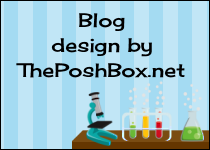Hey Science Friends,
There has been a lot of great discussion and talk about Science Notebooking but we are just getting started. Just in case you missed the Science Notebooking 101 post you can click on the image below to get you there before we jump right in to the next part.
Alright now that you have had time to think about what type of notebook you want to have your students use, now it is time to dig a little deeper. So now you might be asking actually what is a Science Notebook? A Science Notebook is a tool that Scientists use to record data and a place to record their thinking. That is it in the most simplest of terms. In the classroom a Science Notebook is used as a tool to help build processing skills and to help build Science content. The Science Notebook helps foster literacy as well. Inside the pages of a great notebook are wonderful opportunities for meaningful integration.
A Science Notebook does not replace a Science curriculum, it goes alongside any Science Curriculum that is used. For the young Scientist, a Science Notebook retells experiences, investigations, data and understandings. These experiences and investigations are recorded in pictures, numbers and words. An interactive notebook is used to help a child have repeated opportunities to connect and reconnect with the content inside.
Before jumping right in, it is important to consider what your goals are for using Science Notebooks. As I was planning my Science Notebooks for the year, I had to ask myself the same questions. I wanted to be able to use notebooking to extend literacy, to record thinking, to provide multiple opportunities to connect with the content, and to be able to use it as a tool during science discussions to foster oral language development. Additionally, I wanted my notebooks to support district, state and national Science Standards. And last, I wanted my notebooks to be loved and used on an ongoing basis for the entire year. And as an added bonus, I wanted my notebooks to serve as a tool for me to use to help assess the learning objectives presented and have a better understanding of what my students were learning.
Like I said in the previous post, I have tried and failed and tried again with notebooks in the past. My failures were based on not starting with considering the goals beforehand and taking the approach of jumping in and figuring it out as I went along. Based on my experience, I can honestly say that the "jump in and give it a go" method did not produce the notebooks I wanted and when it was all said and done, I still could not clearly define my goals. As with anything, begin with the goal in mind was never bad advice and you know your mom would agree!
So, where do we go from here? Next we will look at what Science Notebooks look like in the beginning. How do we start Science notebooking with young children?

































.JPG)








Thank you so much!! This is very helpful! I just purchased my spiral notebooks for my class. Can't wait for Notebooking 103 :)
ReplyDelete